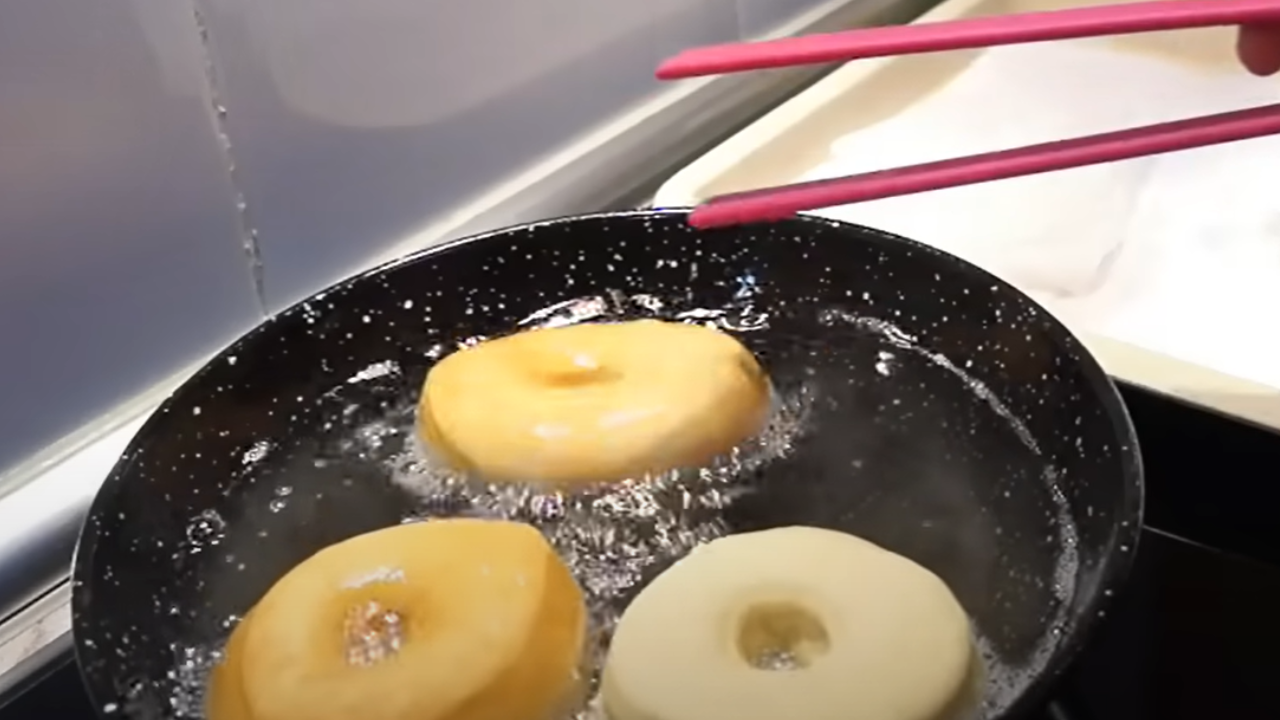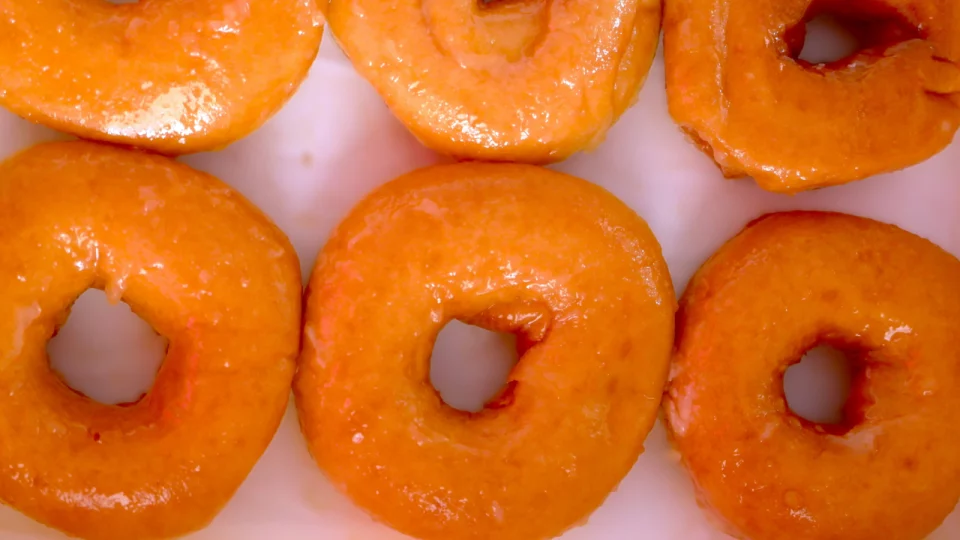If you’ve ever walked past a donut shop and been mesmerized by the sweet aroma of freshly fried donuts, you’ve probably wondered if it’s possible to recreate that magic in your own kitchen. The answer is: absolutely! Making classic donuts at home is not only doable but also incredibly rewarding. Whether you prefer them plain, glazed, or dusted with sugar, homemade donuts can be tailored to your exact preferences. This guide will walk you through a foolproof recipe and tips to make the best classic donuts from scratch in the comfort of your kitchen.
Table of Contents
Ingredients for Classic Donuts
Before diving into the process, let’s gather all the necessary ingredients. For the dough, you’ll need:
- 3 cups of all-purpose flour
- 1/4 cup of granulated sugar
- 1 packet (about 2 1/4 teaspoons) of active dry yeast
- 1/2 teaspoon of salt
- 3/4 cup of whole milk
- 1/4 cup of unsalted butter (melted)
- 2 large eggs
- 1 teaspoon of vanilla extract
- Vegetable oil for frying (about 4-6 cups)
For the classic glaze or coating:
- 2 cups of powdered sugar
- 3 tablespoons of milk
- 1 teaspoon of vanilla extract
Optional toppings:
- Cinnamon sugar mixture (1/2 cup sugar + 1 tablespoon cinnamon)
- Chocolate glaze (1/2 cup melted chocolate mixed with 2 tablespoons of butter)
- Sprinkles
Step 1: Prepare the Dough
The foundation of a great donut starts with a soft, pillowy dough. Here’s how to create that perfect base:
- Activate the yeast: Start by warming the milk in a small saucepan or microwave until it’s warm but not hot (around 110°F or 43°C). Pour the milk into a large bowl, add a teaspoon of sugar, and then sprinkle the active dry yeast on top. Let it sit for about 5-10 minutes until the yeast becomes frothy. This is a crucial step in ensuring the yeast is alive and ready to leaven your dough.
- Mix the dry ingredients: In a separate large mixing bowl, combine the flour, the rest of the sugar, and salt. Mix these dry ingredients together to ensure even distribution.
- Combine wet and dry ingredients: Once the yeast has bloomed (formed a foam on top of the milk), add the melted butter, eggs, and vanilla extract to the milk mixture. Stir everything together well, and then gradually add the dry flour mixture, about one cup at a time, mixing until a dough forms. The dough should be slightly sticky but manageable.
- Knead the dough: Turn the dough onto a lightly floured surface and knead it for about 5-7 minutes. You’ll want to achieve a smooth, elastic consistency. If the dough is too sticky, you can sprinkle in a little more flour as you go, but be careful not to overdo it—too much flour will make the dough dense.
- Let the dough rise: Place the kneaded dough in a greased bowl and cover it with a clean kitchen towel or plastic wrap. Allow it to rise in a warm place for about 1-2 hours, or until it has doubled in size. The rise time may vary depending on the temperature of your kitchen, but patience is key for that perfect fluffy texture.
Step 2: Shaping the Donuts
Once your dough has doubled in size, it’s time for the fun part—shaping your donuts!
- Roll out the dough: After the dough has risen, punch it down to release the air. Roll it out onto a lightly floured surface to about 1/2-inch thickness. You don’t want the dough too thin, as that will result in flat donuts. If you prefer thicker donuts, you can go a little thicker.
- Cut the donuts: Using a donut cutter (or two round cutters—one for the outer donut and a smaller one for the hole in the middle), cut out as many donuts as you can. If you don’t have a donut cutter, you can improvise with a large glass and a bottle cap for the center hole.
- Rest the cut dough: Place the cut donuts on a parchment-lined baking sheet, making sure to leave enough space between them. Cover them with a kitchen towel and let them rest for another 20-30 minutes. This second rise is essential for creating light, fluffy donuts.
Step 3: Frying the Donuts

Now that your dough has risen again, it’s time to fry the donuts to golden perfection.
- Heat the oil: In a large, deep pot or Dutch oven, heat about 4-6 cups of vegetable oil over medium heat. The oil temperature should be around 350°F (175°C). You can use a candy thermometer to monitor the temperature, which is important to ensure the donuts cook evenly without burning or becoming greasy.
- Fry the donuts: Carefully slide the donuts into the hot oil, frying only 2-3 at a time to avoid overcrowding the pot. Fry for about 1-2 minutes on each side, or until they are golden brown. Be sure to flip them halfway through to ensure even cooking.
- Drain the donuts: Using a slotted spoon, carefully remove the donuts from the oil and place them on a paper towel-lined plate or wire rack to drain excess oil. If you plan to coat the donuts in sugar or cinnamon sugar, do so immediately while they’re still warm and slightly sticky.
Step 4: Glazing and Topping
Now comes the part where you can get creative with your donuts! Whether you prefer a simple glaze or something more decadent, here are some classic options.
- Classic Glaze: In a small bowl, whisk together powdered sugar, milk, and vanilla extract until smooth. Dip each donut into the glaze, allowing the excess to drip off before placing it back on the wire rack to set. For an extra glossy finish, you can double dip the donuts in the glaze.
- Chocolate Glaze: If you’re a chocolate lover, this glaze is for you! Melt chocolate with butter over a double boiler or in the microwave (in short 20-second bursts). Once smooth, dip the top of each donut in the chocolate and place it back on the wire rack to set. You can sprinkle with colorful sprinkles, crushed nuts, or coconut for extra flair.
- Cinnamon Sugar: For a classic, comforting flavor, mix granulated sugar with cinnamon and toss each warm donut in the mixture until fully coated.
- Other Toppings: You can add crushed cookies, caramel drizzle, chopped candy, or even a dusting of powdered sugar. The possibilities are endless!
Tips for Perfect Homemade Donuts
- Don’t over-knead: Over-kneading can make your donuts tough, so knead just until the dough is smooth and elastic.
- Monitor oil temperature: Keeping the oil at the right temperature is crucial for getting crispy outsides and soft insides. Too hot, and the donuts will burn before cooking through; too cool, and they’ll absorb too much oil and become greasy.
- Use a thermometer: Both for the oil and ensuring your dough rises in a warm enough spot. These tools can help maintain consistency and avoid common pitfalls.
- Enjoy fresh: Homemade donuts are best eaten fresh. While you can store them for a day or two, they lose their magical fluffiness after sitting out for too long. If you want to prep them ahead of time, fry them and freeze the donuts once cooled, then reheat them in the oven or microwave when ready to serve.
